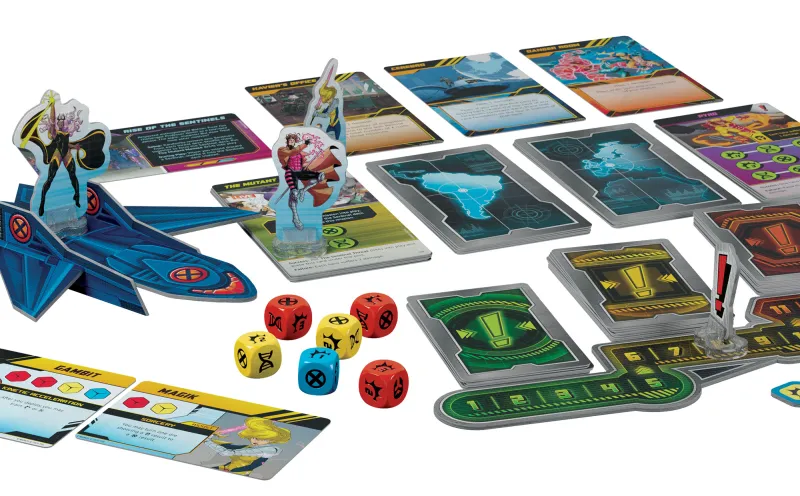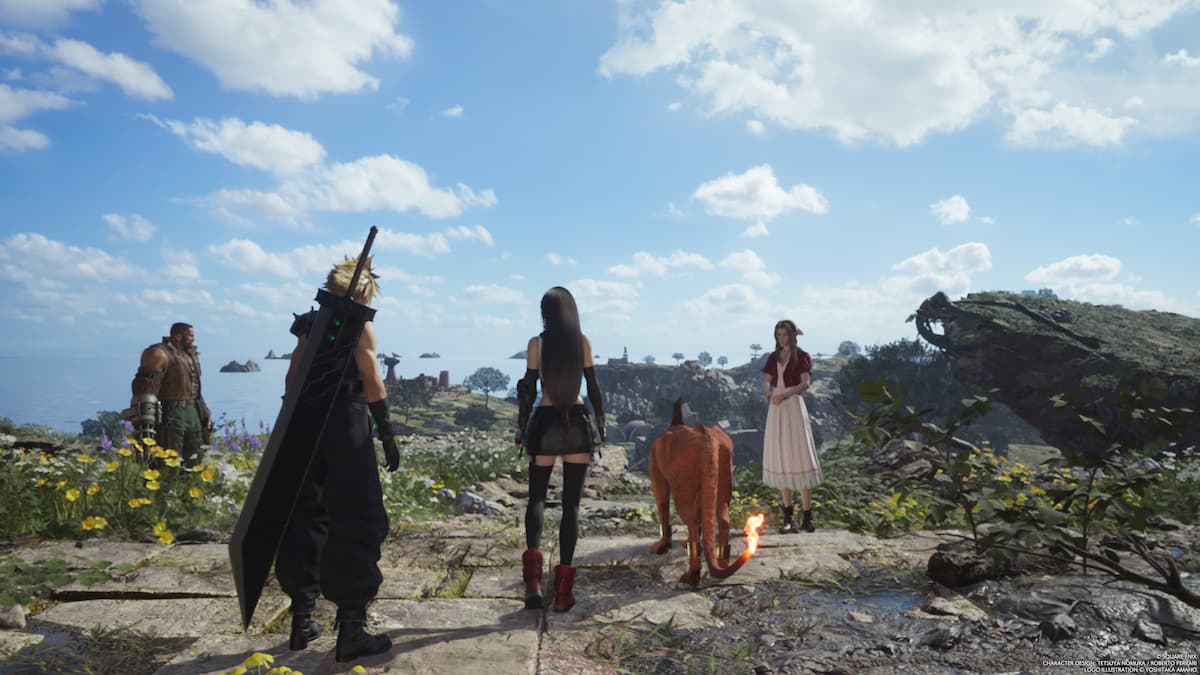
The X-Men hold a special place in many comic fans’ hearts, and I’m no exception. While my tastes in comics have broadened over the years to include a ton of other great books, my enthusiasm for comics started with the Children of the Atom. I remain a big fan of Xavier’s mutants, and the myriad stories they’ve been a part of over the years. That’s why I was especially curious about Fantasy Flight’s take on the X-Men franchise; the teams there often reveal an uncanny talent for recognizing the unique tone of a licensed property, and finding a way to reflect that in the mechanics and flavor of a new board game. I’m happy to say that X-Men: Mutant Insurrection is no exception. By balancing an action-focused, dice-driven battle system with a clever approach to alliances and character relationships, the new game has all the drama and flair of some of the great superhero comic runs.
X-Men: Mutant Insurrection is a fully cooperative tabletop game for one to six players. While experienced players can blast through a game solo or with a partner in a bit over an hour, the game really comes into its own with three or more players, and I’d expect that to be a two-hour-plus playthrough for most groups. I recommend a larger group size because so much of the X-Men mythology circulates around the ideas of community, teamwork, and competing personalities, and it’s hard to nail that vibe unless you have a similar mix of different folks at the table.
In any given session, each player takes on the role of one of the X-Men heroes. I was happily surprised by the mix of playable choices. Of course, you’ve got standbys like Storm and Phoenix in the mix, but you also get folks like X-23 and Forge, with 16 playable figures in total. The mutant heroes bring their own capabilities to the fight, reflected largely through the selection of dice they bring to a conflict. Different colored dice are meant to represent distinct talents, divided into fighting and strength focused red dice, power-focused yellow dice, and teamwork or expertise-targeted blue dice. I like the way these rough delineations help to recall specific aspects of each hero, and the broad variety of available character choices is a big boost to replayability.

As colorfully drawn cardboard standees, the chosen X-Men board the cardboard Blackbird and set out to confront a designated scenario/scheme. Various story elements are introduced with each of the different plots (eight total in the initial launch), but inevitably it’s the machinations of a particular villainous foe or group that must be confronted, usually recalling famous storylines like Dark Phoenix or the early appearance of the Sentinels. As the chosen story plays out through a series of cards and events, each player sends their hero rocketing around the world to confront problems that arise, occasionally halting to return to the mansion to train, heal, or use Cerebro to identify new challenges around the world.
The action unfolds at the various international sites, as each mutant hero gets a chance to roll dice and try to complete objectives, from trying to bring down baddies like Pyro or Silver Samurai to hostage situations or the prevention of a heist. And while Beast, Rogue, or any of the other heroes can tackle these missions on their own, the best path to success is often through teaming up. Each character brings an Assist card with them to the battle, which can be loaned out to other characters on the same mission once per round to help confront a challenging objective. So, with Wolverine you know that you’re in good shape to get those results that appear on the red fighting dice, but you’re not in great shape to get that yellow power result you need. So, just call in an assist from Iceman. The dynamic that emerges is one in which players must strategize together about where they deploy to manage the various threats that emerge, capitalizing on potential synergies between individual heroes.
As you tour the globe, like in so many of the comics, you also regularly encounter mutants in need of rescue. Complete the event, and you get to draw a new mutant to join you in your adventures – usually lesser-known heroes like Dazzler or Multiple Man. These new allies can turn the tide of a fight with unique powers that you trigger at critical moments.

Inevitably, if you and your team manage to stay alive long enough, the story rises to a climactic showdown, in which the heroes work together to take down a particularly overwhelming threat. It’s a fun way to give the tail end of the game an injection of excitement, especially as your mutants charge into battle, already fatigued and worn down by the battles from earlier in the game.
My favorite feature of the game are the Bond cards, which often appear as either a reward for mission completion, or punishment for failure. Each bond is two-sided, and there’s pairs of each bond in the deck; when you acquire one, you give the second copy to another player at the table. If it’s on the positive side, like Devotion or Love, it provides potent bonuses when the two heroes work together. But any number of traumatic situations can break those bonds, forcing a card flip, and turning admiration to envy, or love to regret. Sorry, Logan – it just never seems to work out for you and Jean.
In any given game, an emergent story begins to unfold. While the specific plot at hand may put you into conflict with the Hellfire Club, Magneto, or one of several other villainous forces, it’s the more random elements that are most memorable. Maybe Gambit saves Warlock from certain demise, only for Warlock to turn the tide in a crucial fight later on. Perhaps Beast bonds with Forge over their shared research, only for one of them to sabotage the other’s efforts – the how and why are up to you and your fellow players to discuss, if you like.

Mechanically, X-Men: Mutant Insurrection doesn’t set out to rock anyone’s world. The chance-driven element of trying to roll the correct results on objectives is a pretty familiar structure, and the pace of cooperative play echoes a number of other successful cooperative board games. And while strategic team-ups are absolutely a must, as well as smart team-based management of the different threats on the table at any one time, it’s still a game with some significant luck involved in the way things play out. Nonetheless, the game finds its greatest success through smart implementation of its license, brisk-playing turn structure, and some lovely production. The card art, in particular, deserves a special call-out. While it’s clear that Fantasy Flight aimed for a “timeless” approach to character appearances, the colorful and bright aesthetic often recalls 90s era visuals, as much drawn from the animated cartoon versions of these characters as the comic books. It’s a perfect fit for the fast-moving action and lightweight vibe of the game.
In short, if you’ve ever harbored an affection for some variation of Marvel’s merry mutants, it’s hard for me to imagine that you wouldn’t find a lot to love in Fantasy Flight’s newest release. Filled with iconic characters, classic storylines, and crisp combat, X-Men: Mutant Insurrection ably translates what works about these comic book heroes into tabletop fun.
If the X-Men aren’t your thing, I encourage you to check out our Top of the Table hub, where you’ll find an array of great board, card, and miniature games to enjoy, including recent selections for the Best Tabletop Games of 2020. As always, if you’re looking for a particular game or playstyle, or you just need advice for your next board game get-together, drop me a line and I’ll help however I can.


